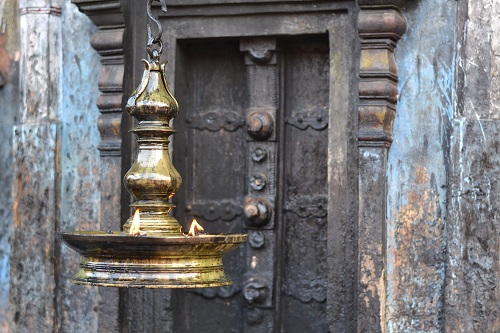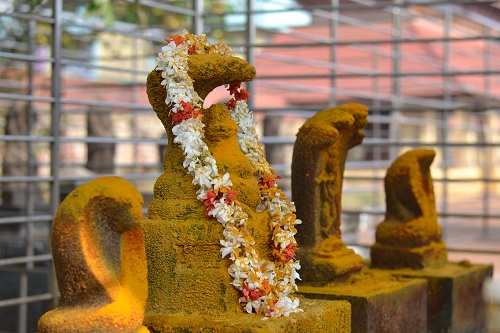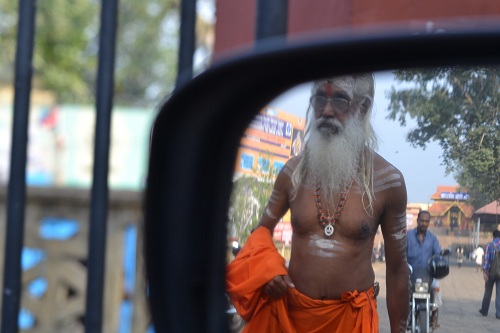A Minor Diversion’s posting frequency will fall until February 23rd. We are in Myanmar, where internet access is not a guarantee. I’ve set up these posts to go live while we are away. Even though they are about our time in India, I didn’t want to miss sharing some final Kerala experiences with you. We’ll have stories from Myanmar once we are back.
Just before we left Kerala, we made a visit to a the 500 year old Thirunakkara Shiva Temple, dedicated to Lord Shiva. Hindus bathe before their morning offerings, and we were up early to do the same. In fact, the results of a morning temple visit make it easier to recognize a Hindu. Women usually have wet open hair. Men drape cloth around their shoulders since they are expected to be bare chested at the temple. Both men and women also have ashes on their foreheads, received from the priest inside the temple once their offerings have been made.
Pictures are only permitted around the temple compound, not in the main temple. A temple compound usually has a few small structures that house deities around the main temple. Every Hindu temple in India has several diyas (yes, that’s where my name comes from). A diya is an oil lamp, used in temples, for festivities and general decoration. This one hangs in front of the original stone temple structure and wooden door.

In one corner of the temple were several hundred year old snake status bathed in salt and turmeric. The mixture is an offering to cool the snakes in hopes of preventing future attacks (actual and metaphorical). In Kerala, where snakes are prevalent, these statues were very heavily coated.

Around the temple grounds were priests and yogis in meditation. I didn’t want to impose with the camera, but was lucky to get this shot on our way out.
